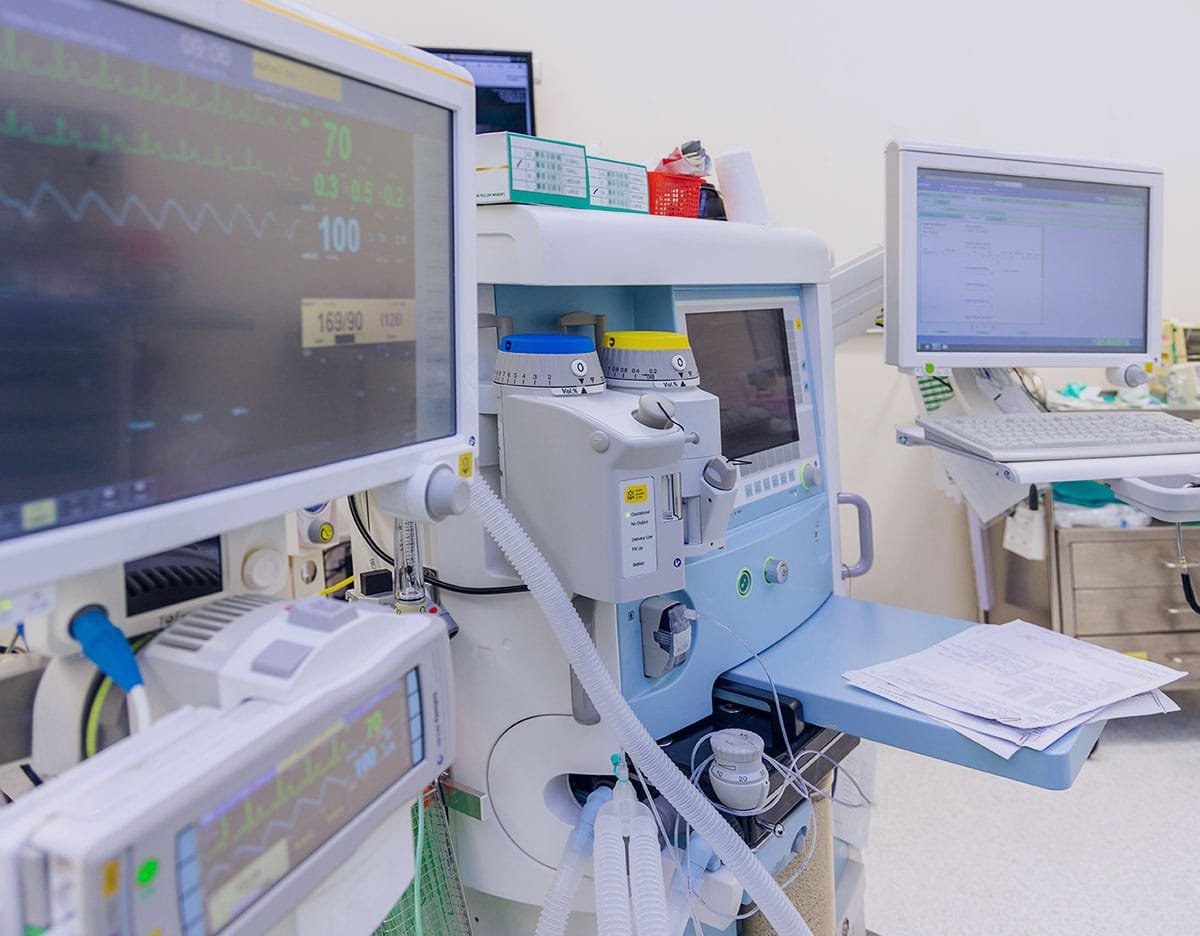An anesthesia machine is a cornerstone device in modern surgical settings, ensuring that patients remain unconscious, pain-free, and physiologically stable during operations. With healthcare systems placing increasing emphasis on patient safety, operational efficiency, and technology integration, procurement teams must make informed decisions when sourcing these machines.
This in-depth article aims to provide procurement professionals with technical insights, practical considerations, and current market trends to guide the acquisition of high-quality anesthesia systems.

What Is an Anesthesia Machine?
An anesthesia machine is a life-supporting device that delivers a controlled mixture of medical gases, including anesthetics and oxygen, to patients undergoing surgery. Its core functions include:
-
Maintaining consistent anesthetic depth.
-
Assisting or controlling patient ventilation.
-
Monitoring gas flow, pressure, and patient vitals in real-time.
-
Ensuring safety through alarms, backup systems, and gas scavenging.
Over the past two decades, anesthesia machines have evolved from purely mechanical systems to intelligent digital platforms with advanced automation, ventilation modes, and EMR integration.
Key Components and Their Functions
-
Gas Delivery System
-
High-pressure supply lines connect to oxygen, nitrous oxide, and sometimes medical air.
-
Flowmeters (manual or electronic) regulate the gas flow to ensure proper dosage.
-
Pressure regulators reduce cylinder pressure to a usable range (~50 psi).
-
Some systems incorporate automatic gas switching between cylinders and central pipeline.
-
-
Vaporizers
-
Specialized components that convert liquid anesthetic agents like isoflurane, sevoflurane, and desflurane into a precise gas vapor.
-
Modern vaporizers are agent-specific, temperature-compensated, and flow-rate independent.
-
-
Breathing Circuit
-
Includes inspiratory and expiratory limbs, unidirectional valves, reservoir bags, and an absorber system with soda lime for CO₂ elimination.
-
Some systems allow for manual or assisted ventilation, depending on the clinical need.
-
-
Ventilation System
-
Integral for patients under general anesthesia, especially those unable to breathe independently.
-
Supports multiple modes:
-
VCV (Volume Controlled Ventilation)
-
PCV (Pressure Controlled Ventilation)
-
SIMV, PSV, and more.
-
-
Features such as PEEP, adjustable I:E ratio, and apnea backup improve patient management.
-
-
Monitoring and Alarms
-
Vital signs monitoring (SpO₂, EtCO₂, tidal volume, airway pressure, gas concentration).
-
Integrated touchscreen displays simplify real-time analysis and trend review.
-
Alarms for hypoxia, low agent concentration, circuit disconnection, and power failure ensure safety.
-
-
Scavenging System
-
Collects and removes excess or exhaled anesthetic gases, minimizing exposure risks to surgical staff.
-
Systems include active (vacuum-based) or passive (pressure-driven) designs.
-
Types of Anesthesia Machines
| Type | Description | Suitable For |
|---|---|---|
| Stationary Continuous Flow | Full-featured systems with integrated monitoring and ventilators | Hospitals, surgical centers |
| Portable Anesthesia Units | Lightweight, often manual or semi-automatic | Field hospitals, ambulatory care, emergency use |
| MRI-Compatible Machines | Non-ferromagnetic designs to avoid magnetic field interference | MRI suites |
| Veterinary Anesthesia Systems | Scaled for animal anatomy and metabolism | Veterinary clinics, research labs |
Critical Factors in Anesthesia Machine Procurement
1. Compliance with International Standards
Always verify certifications such as:
-
ISO 80601-2-13: Safety and performance requirements specific to anesthesia workstations.
-
IEC 60601-1: Electrical safety of medical devices.
-
FDA 510(k) or CE Mark (depending on region).
2. Ventilation Capabilities
Choose systems that accommodate a range of patient profiles—neonatal to adult. Advanced features like:
-
Dual-controlled ventilation
-
High-frequency ventilation
-
Pressure support with volume guarantee (PSV-VG)
3. User Interface and Workflow Integration
-
Touchscreen interfaces with intuitive UI reduce training requirements.
-
EMR/HIS integration streamlines documentation.
-
Backup battery (at least 60–90 mins) for power outage scenarios.
4. Serviceability and Maintenance
-
Modular designs allow easier part replacement.
-
Check availability of local service centers, spare parts, and remote diagnostics support.
-
Consider vendors offering preventive maintenance contracts and calibration training.
5. Scalability and Upgradability
Choose machines with optional add-ons (e.g., gas modules, extra vaporizers) to extend functionality as your facility grows.
Common Pitfalls to Avoid
-
Underestimating Ventilation Needs: Especially in ICUs or complex surgeries where controlled modes are essential.
-
Ignoring Staff Training Requirements: Advanced machines require operator training for safe and effective use.
-
Selecting Non-Compliant Equipment: Always verify regional certifications before importing or installing.
Innovations Shaping the Future of Anesthesia Machines
-
Closed-Loop Feedback Systems
-
Automatically adjust anesthetic agent delivery based on real-time BIS (Bispectral Index) or EtCO₂ data.
-
Improves patient stability and reduces anesthetic consumption.
-
-
Eco-Friendly Low-Flow Technology
-
Enables use of lower fresh gas flows (<1 L/min), minimizing waste and cost.
-
-
Wireless Monitoring and Cloud Connectivity
-
Cloud-based patient data storage and predictive maintenance alerts.
-
Remote control in tele-ICU environments.
-
-
Artificial Intelligence (AI) Integration
-
AI-assisted alarms reduce false positives and detect anomalies early.
-
Predictive analytics for ventilator weaning or dosage titration.
-
Questions to Ask Your Supplier
-
What ventilation modes does the system support?
-
How long is the warranty and what’s covered?
-
Are consumables (circuits, filters, vaporizers) proprietary?
-
Is software upgradeable?
-
Are there usage training and clinical support programs?
Conclusion
An anesthesia machine is more than just a piece of equipment—it’s a vital component of surgical safety, patient care, and hospital efficiency. For procurement professionals, a strong understanding of the device’s features, regulatory standards, and lifecycle cost is essential for making an optimal investment.
By combining clinical functionality, regulatory compliance, and supplier support, buyers can ensure they’re equipping their medical teams with systems that deliver reliability, precision, and value for years to come.
Whether you’re sourcing for a hospital, clinic, or surgical center, choosing the right anesthesia machine requires a deep understanding of both technical specifications and long-term performance. By focusing on compliance, functionality, service support, and innovation, procurement professionals can make confident, high-impact decisions.
Looking for a reliable supplier of anesthesia machines? Contact us today for expert consultation and product recommendations.
